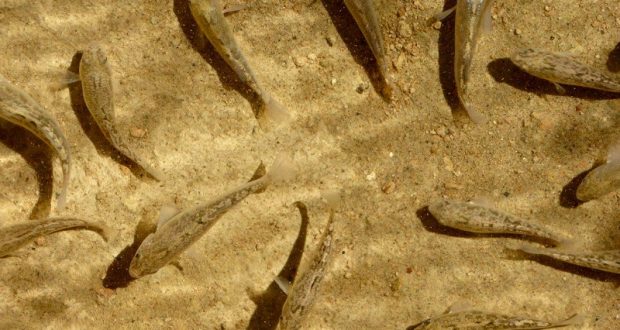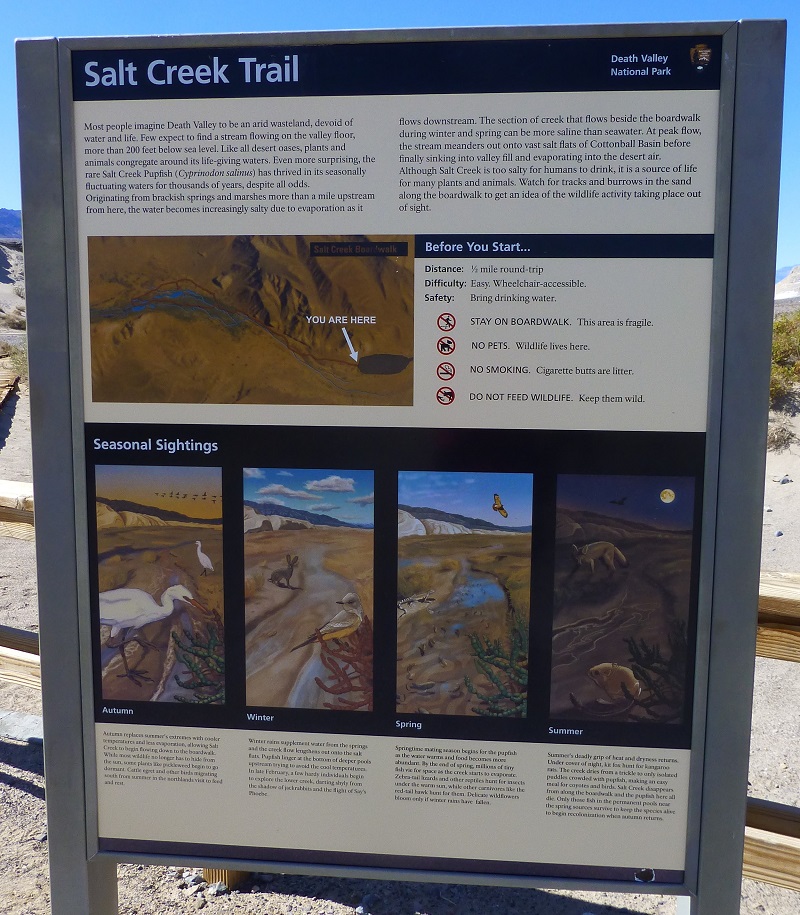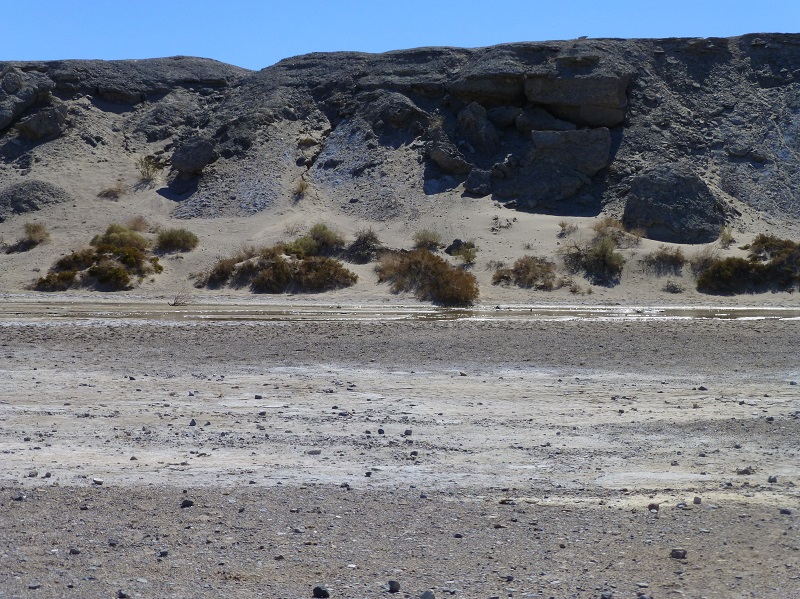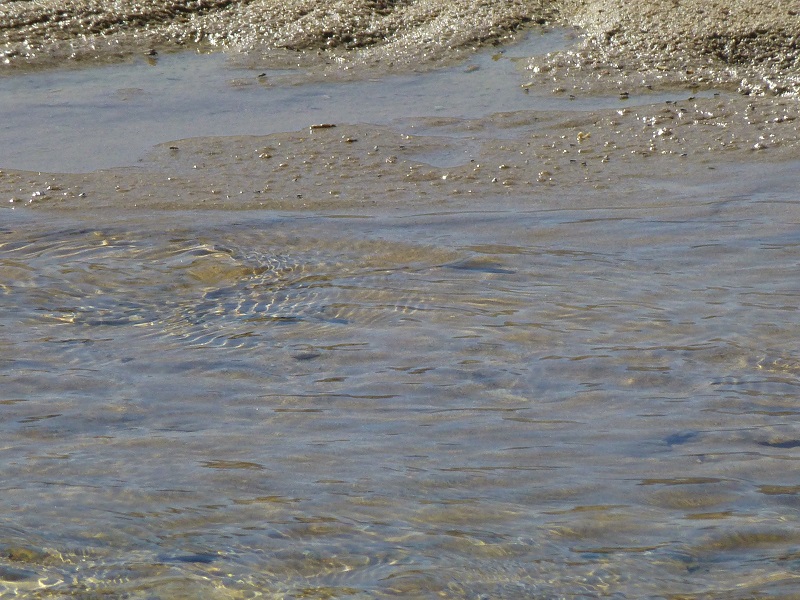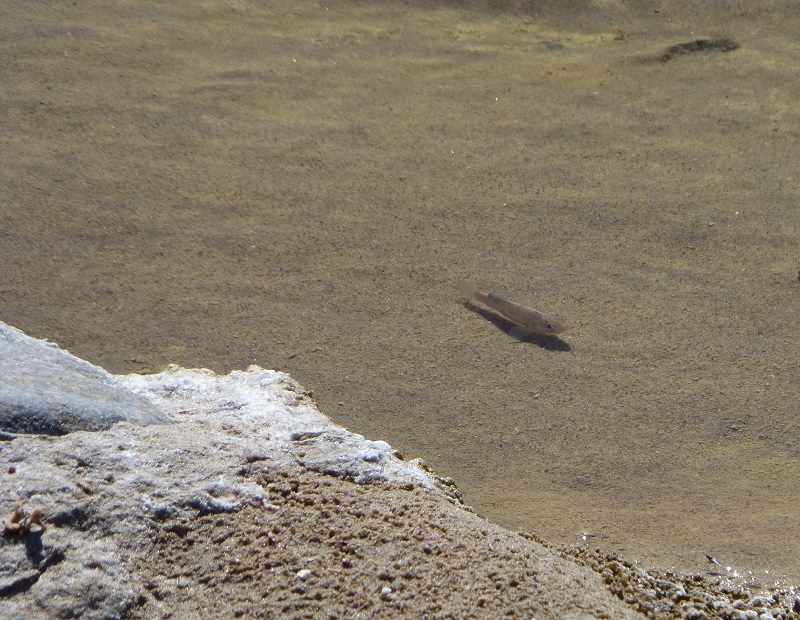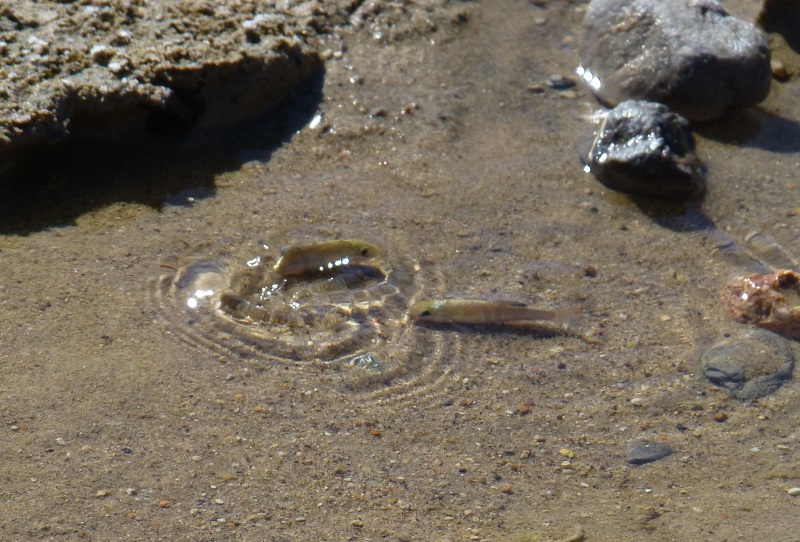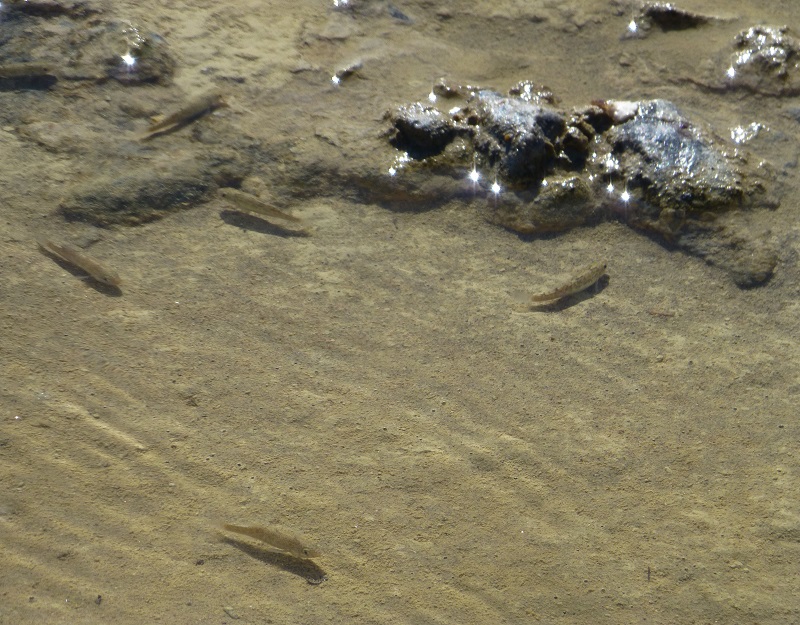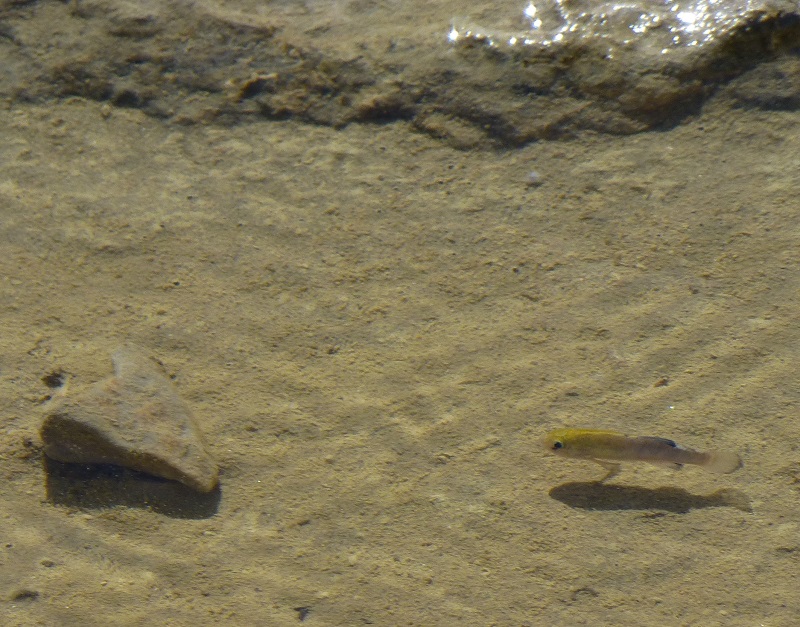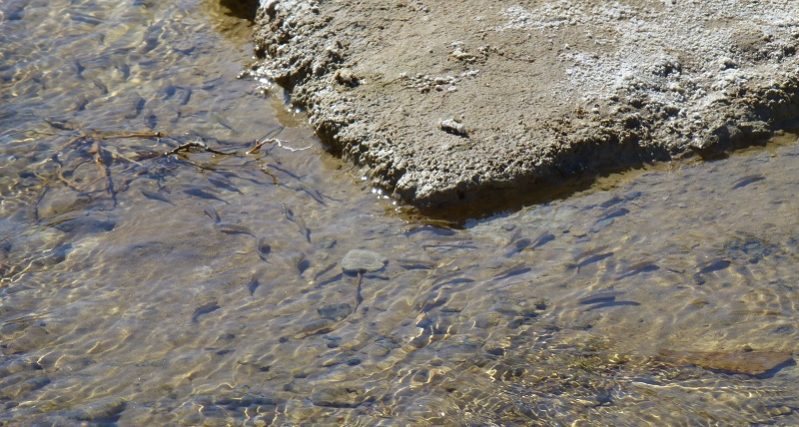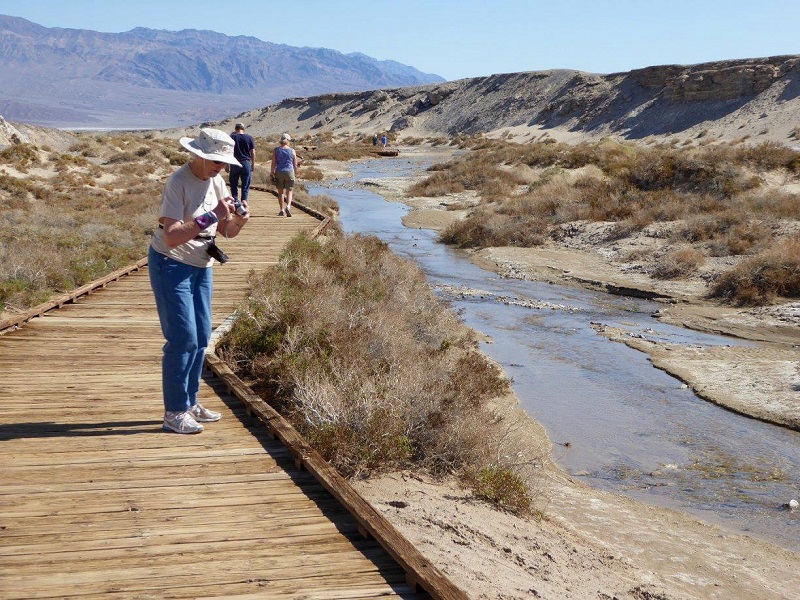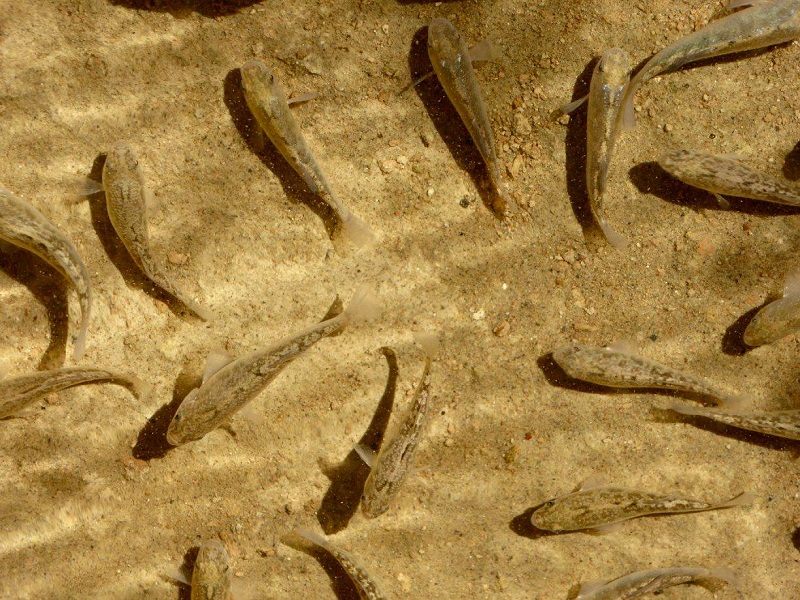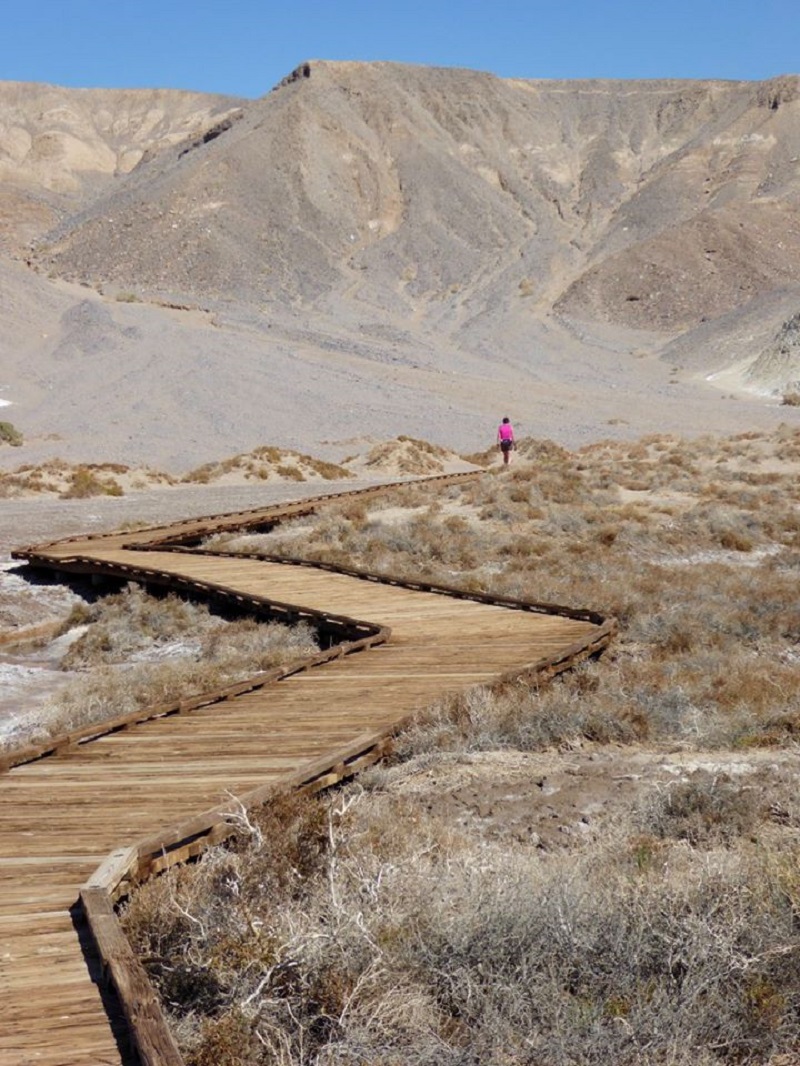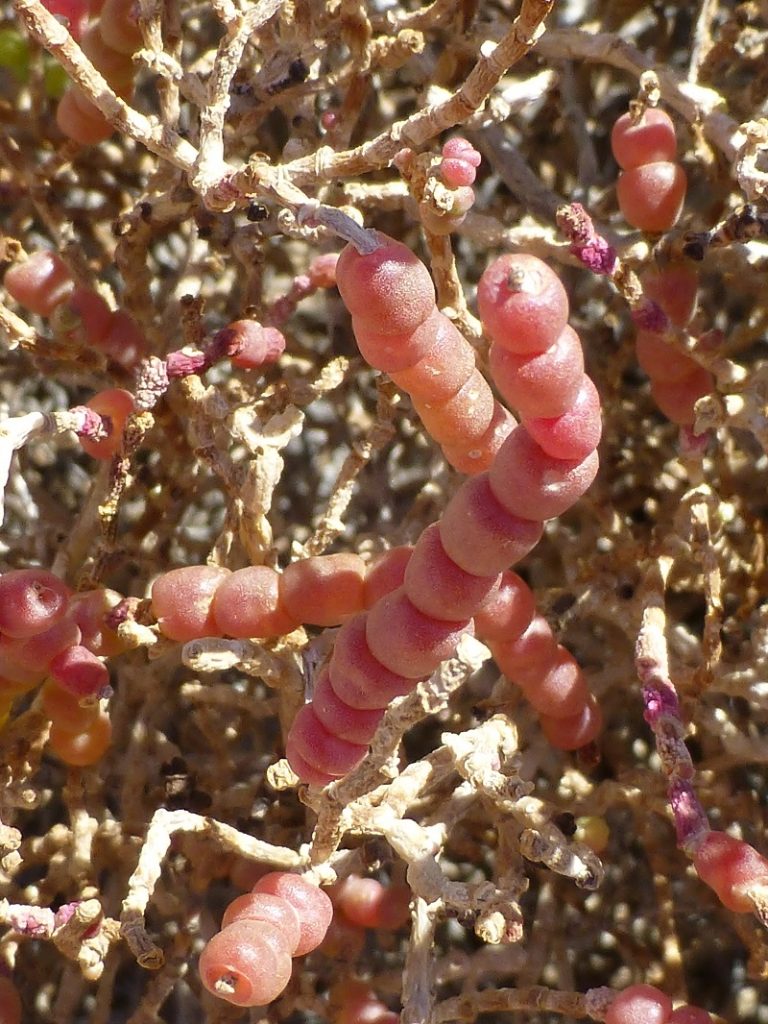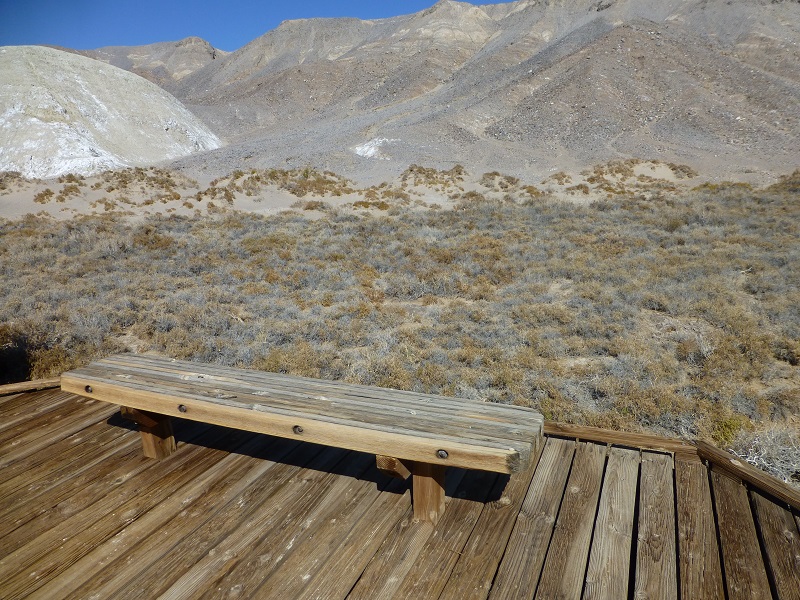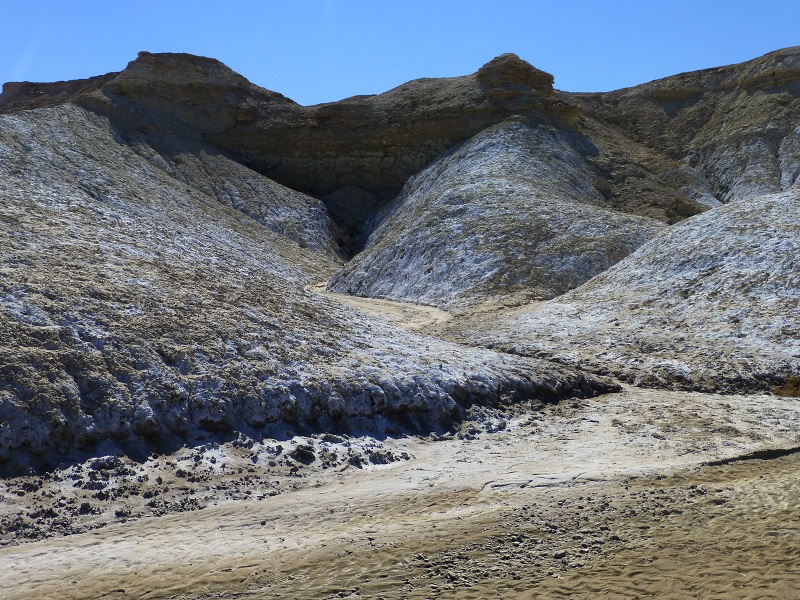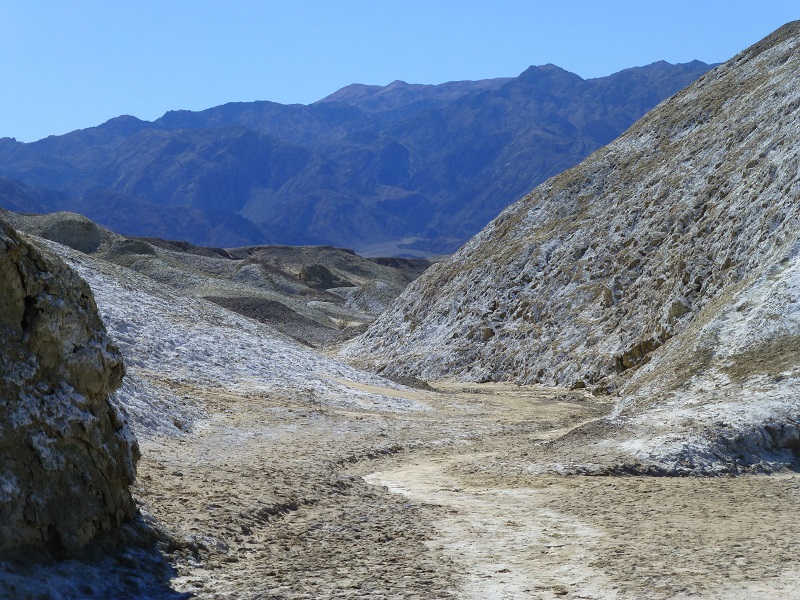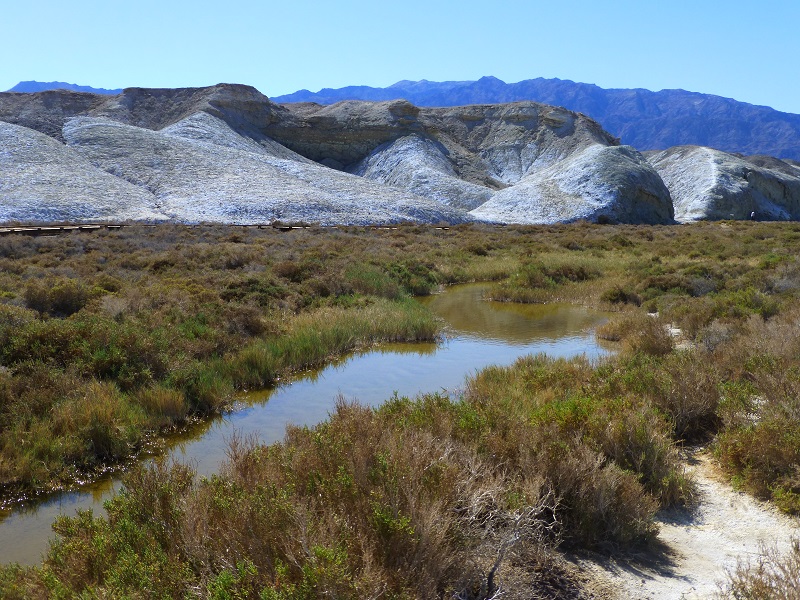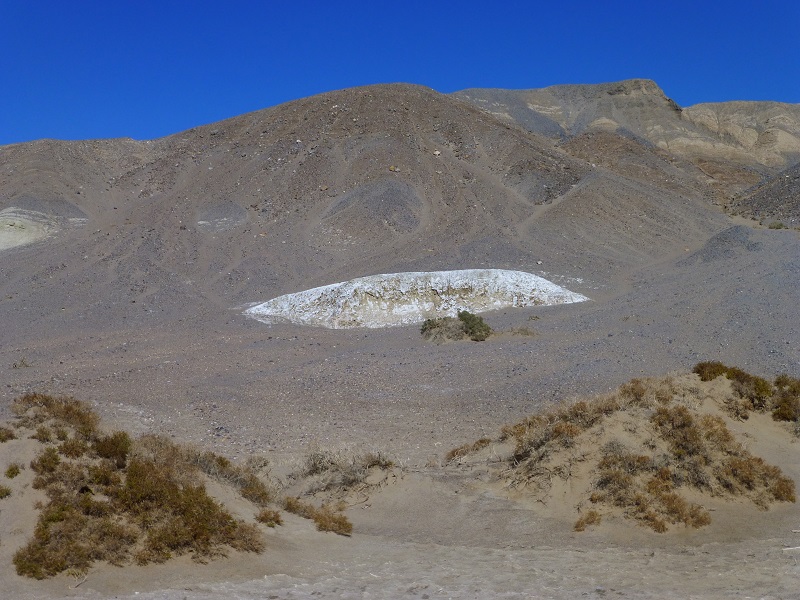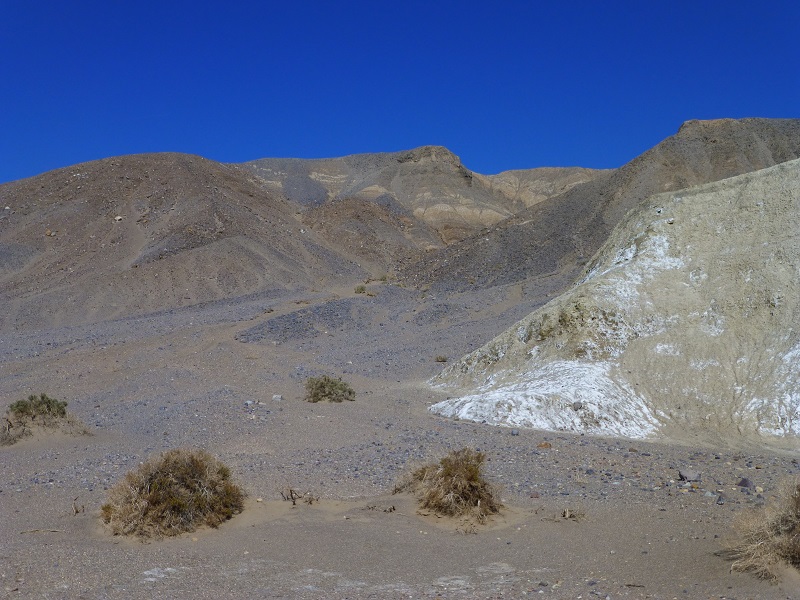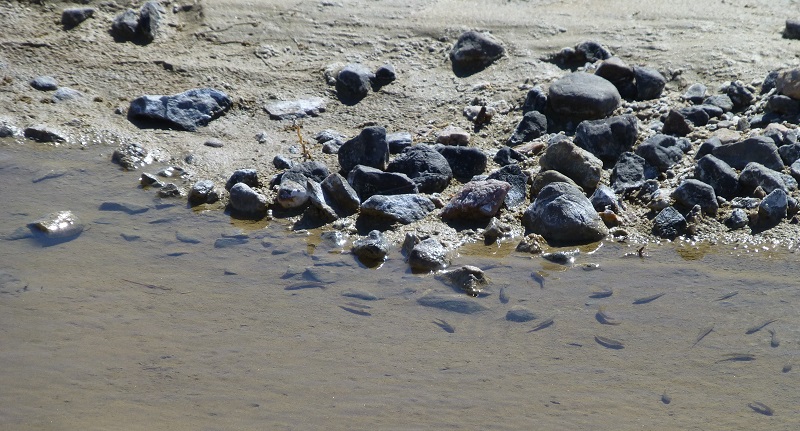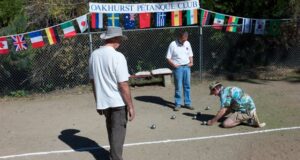I had heard of pupfish but had never seen one, so I was looking forward to learning more, especially after I found out it was breeding season for them and this was the best time to see them. About 13.5 miles north of Furnace Creek, we headed south on a graded gravel road off of Hwy 190 to the Salt Creek parking area. The Salt Creek Interpretive Trail led the way on this adventure. It is only about 1/2 mile long on a boardwalk that runs along a small stream.
A long time ago, Death Valley was a huge lake and it was interconnected to areas outside of the valley by the Armargosa, Mohave and Colorado River drainages. This allowed fish to move among the lakes in this area but between 10,000 and 4,000 years ago, most of these watercourses disappeared, leaving only a few intermittent streams. As those lakes and rivers receded, the larger fish died, leaving mainly smaller fish. Today, some of these tiny fish have been isolated in their niches for at least 10,000 years and have evolved into distinctive types. There are five species of pupfish that occur within Death Valley National Park.
Salt Creek rises from a series of springs about 2 miles upstream from the parking area. During the winter, the stream can sometimes get big enough to reach beyond the parking area but during the summer it ends at the upper end of the boardwalk. These are really harsh conditions that the Salt Creek pupfish (Cyprinodon salinus) live in and this is the only place in the world that they live. Other types of fish can absorb water through their skin but pupfish need to drink or they will become dehydrated.
As the water temperature starts to warm in late winter, spawning starts. The male fish will flash a brilliant blue when they are defending their small territories. They say that the springtime population can reach 1 million fish but most die off as the creek dries up in the heat of the summer. By September, the population has decreased to a few thousand survivors in the deepest pools that are located upstream. The average Salt Creek pupfish live only 4 to 6 months. The Salt Creek pupfish has been classified as endangered by the International Union for Conservation of Nature due to its extremely restricted distribution.
Now to try and spot one of these pupfish. I was sure hoping that I could but it was really tough. They are only about an inch or two long.
We were finally able to spot one.
Now that I knew what I was looking forward, I starting spotting lots of them.
We all had our cameras out, trying to capture pictures of them.
I like this one that Gail took because it really shows the detail on their backs.
There are other critters that live along Salt Creek in and around the pickleweed and saltgrass. Killdeer, coyotes, sidewinders and lizards hang out here so I continued walking out the boardwalk to see if I could spot something.
I did spot these interesting stems of Pickleweed that kind of look like strings of beads. Pickleweed can tolerate these high levels of alkali and salt.
The boardwalk had some nice benches where you could sit and ponder.
There was some beautiful scenery that could be pondered from those benches.
The landscape was quite strange looking. They have also located fossil footprints in this area that include camel, horse, antelope and bird tracks. 12 million years ago this area around the ancient lake was a lush grassland. It was a challenge to try and picture what it must have looked like back then.
The boardwalk looped back to where we started and we took one last look at those pupfish.
Sources:
Bryan, T. Scott and Tucker-Gryan, Betty, The Explorer’s guide to Death Valley National Park, Third Edition, University Press of Colorado, 2014
Death Valley National Park Home Page
Death Valley National Park Hiking
Prior Blogs in this Area:

